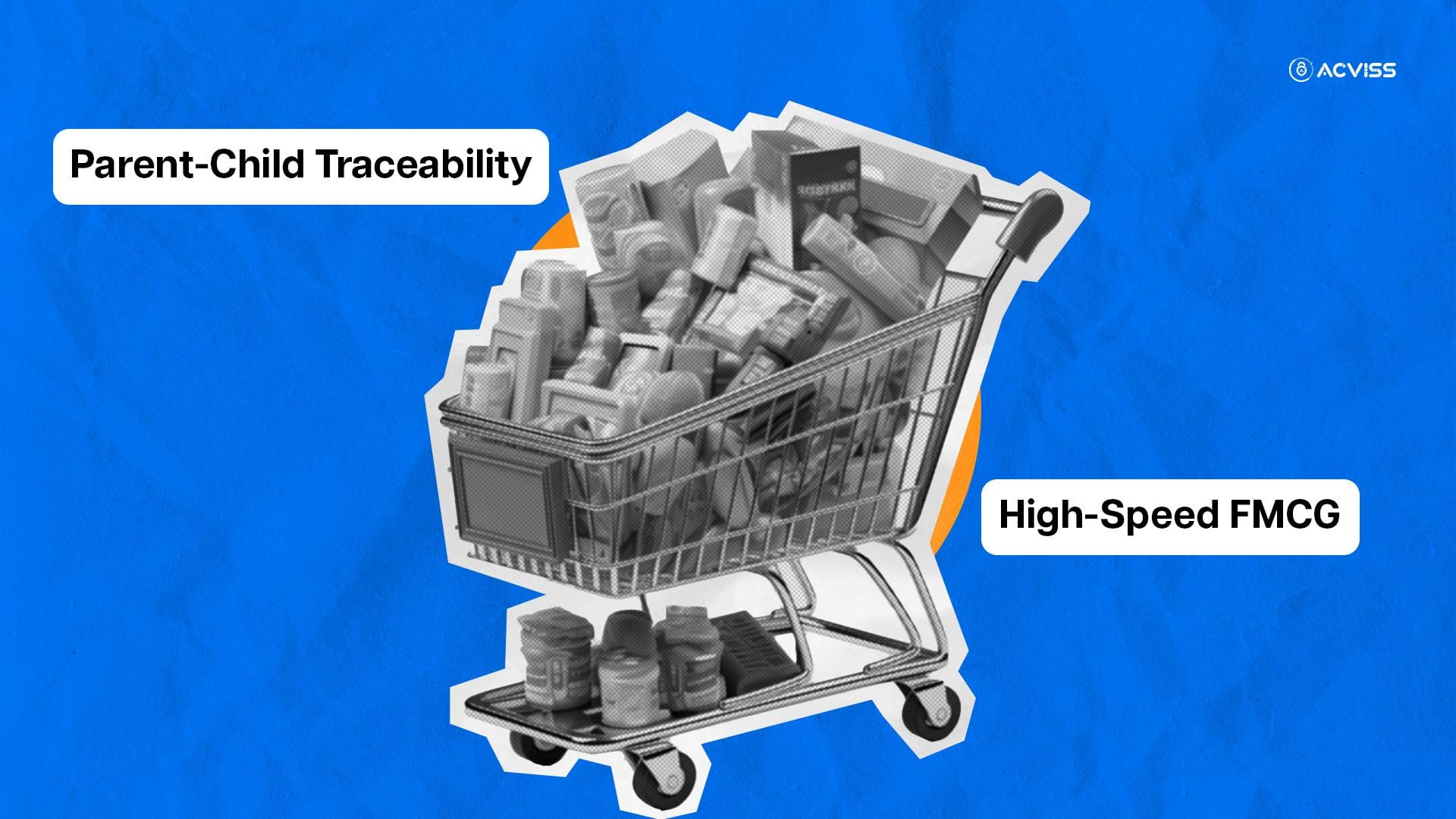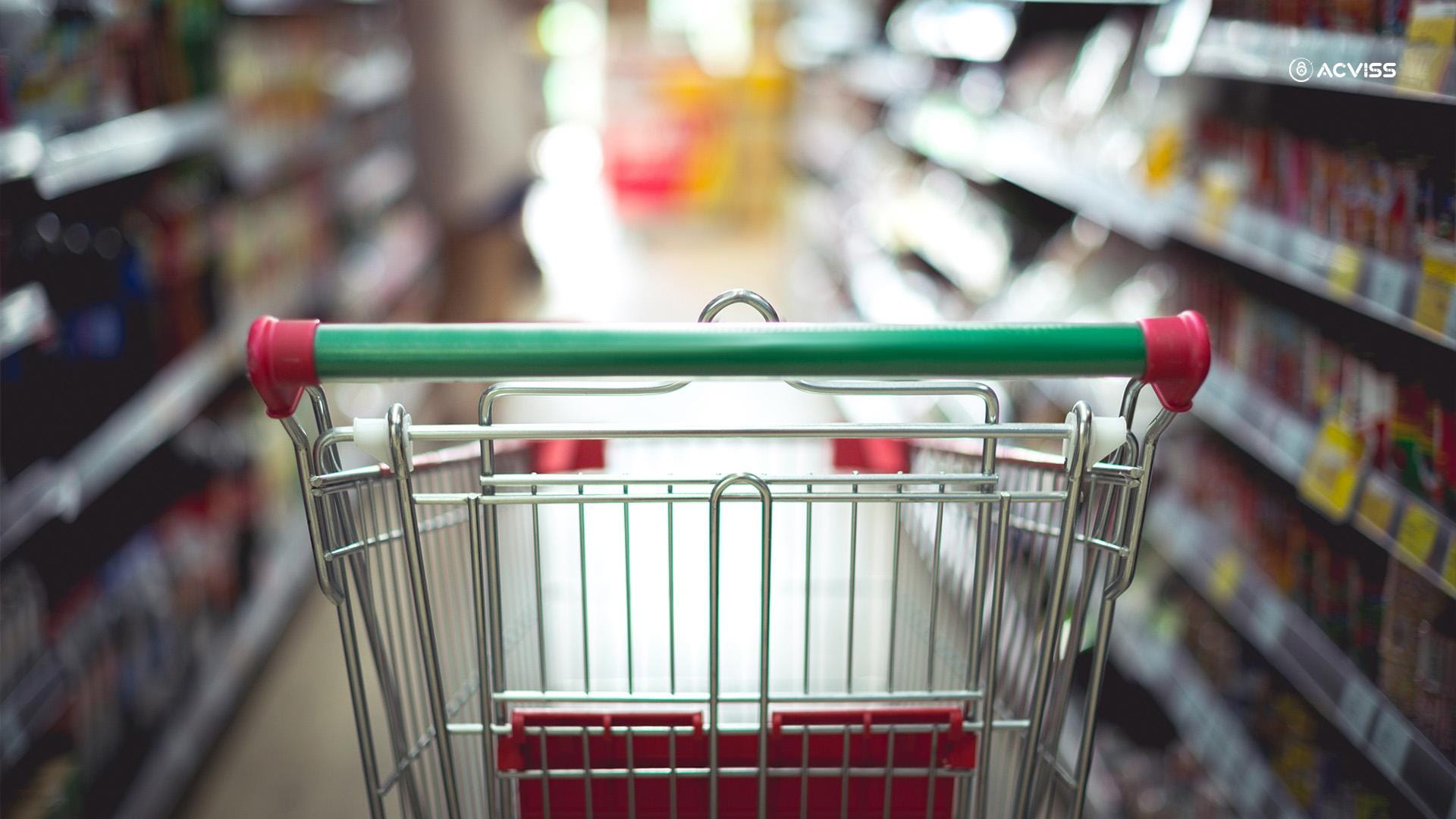Why Parent-Child Traceability is Essential for High-Speed FMCG Lines

Every minute counts on a high-speed FMCG production line. With thousands of units flying off the conveyor belts every hour, precision isn't just helpful, it's vital. Yet, even with the rise of automation, AI and supply chain digitisation, a surprising number of manufacturers still lack the kind of granular visibility that protects their brand, their consumers and their bottom line.
This is where parent-child traceability becomes more than a buzzword. It becomes a foundational requirement for resilient, secure and future-ready supply chain management.
Understanding the Parent-Child Traceability Model
To unpack its importance, let’s first define what parent-child traceability means.
In simple terms, it is the ability to link a finished product (parent) back to its components (children) across all stages of the supply chain. For FMCG brands, this might look like associating a shrink-wrapped carton (parent) to the packs of biscuits (children) inside, or linking a case of detergent bottles to each bottle's production data, packaging batch, and quality check outcomes.
This hierarchy is digitally mapped, usually through advanced track and trace solutions. The goal is to ensure that if a defect, tampering or quality issue is reported at the consumer level, the manufacturer can swiftly and accurately isolate the problem without recalling unaffected products.
The Stakes in High-Speed FMCG Lines

Speed is a double-edged sword. On one hand, it enables FMCG brands to meet massive consumer demands. On the other hand, it significantly narrows the window for error detection. A single mislabelled case or a faulty seal might translate into tens of thousands of compromised units before detection, spreading through distributors, retailers, and eventually into homes.
Here's what poor traceability costs in real terms:
- Brand reputation: Consumers are far less forgiving of product recalls or quality issues today, especially when safety is involved.
- Regulatory penalties: Compliance requirements across markets have become tighter, with mandatory reporting timelines.
- Counterfeit vulnerability: Lack of granular traceability makes it harder to identify infiltration of counterfeit products.
- Inefficient recalls: When issues arise, a lack of parent-child mapping forces a broad recall, instead of a surgical one.
In short, without a detailed product traceability system in place, high-speed manufacturing quickly becomes high-risk manufacturing.
Why Legacy Systems Fall Short

Most legacy ERP or basic labelling systems are ill-equipped to handle the complexity of real-time parent-child tracking. They often record production data at the batch or lot level but fail to associate specific units with their subcomponents or packaging hierarchy.
This gap is further exacerbated in FMCG environments where SKUs change rapidly, seasonal demand spikes strain capacity, and multi-tier packaging adds several layers of traceability complexity.
Without digitised linkage between parent and child units, brands cannot:
- Identify where a defective or tampered product originated.
- Pinpoint the root cause across suppliers, packaging or line operations.
- Detect counterfeit insertions early in the supply chain.
Building Traceability Into the DNA of Operations
Implementing parent-child traceability isn’t just about slapping QR codes on packs. It requires a cohesive system that integrates across production, packaging, warehousing and distribution. Here's how to build it:
1. Digital Labelling with Unique IDs
Every unit, from the smallest child (say, a shampoo sachet) to the largest parent (a shipping pallet), needs a unique, tamper-proof identifier. These identifiers must be non-cloneable and scannable throughout the supply chain. This is a key aspect of product authentication.
2. Hierarchical Data Mapping
Linking all these identifiers into a digital tree allows tracking both upstream and downstream. When a case fails quality checks, you know exactly which individual units to isolate and which suppliers were involved.
3. Integration with Track and Trace Platforms
Modern platforms offer real-time updates as units move across nodes. These platforms help in IP protection by authenticating products against digital records, flagging anomalies like duplicate scans, unexpected location pings or breakage in packaging chains. Solutions such as Acviss Origin are already helping brands implement these capabilities without disrupting existing production flows.
4. Consumer-End Product Verification
When the digital thread extends to the consumer, they can verify the product’s authenticity instantly using their smartphones. This last mile of verification dramatically increases brand trust and adds a powerful layer of brand protection.
A Real-World FMCG Problem

Consider a leading snack manufacturer distributing millions of packets monthly across diverse geographies. A packaging issue led to air leakage in several pouches, causing product spoilage. Due to a lack of granular traceability, the recall had to be extensive and expensive, pulling entire batches off shelves even in unaffected regions.
If a parent-child traceability system had been in place, the company could have narrowed the recall to specific SKUs from a single packaging line across a limited timeframe. More importantly, counterfeit packs found in some regions could have been identified and removed from circulation through better brand verification protocols.
Traceability and Anti-Counterfeiting: Two Sides of the Same Coin

The fight against counterfeiting in FMCG is no longer limited to high-value goods. Every day, products, from baby food to detergent, are being faked with alarming regularity.
Parent-child traceability forms the backbone of effective anti-counterfeiting solutions. By ensuring every product has a verifiable digital identity, and linking it to its origin and movement history, brands gain the ability to:
- Stop fake goods from entering distribution chains.
- Safeguard consumers from health and safety risks.
- Strengthen their IP protection and enforce trademark claims.
- Build a transparent, auditable trail that regulators and partners can trust.
Implementing Change: A Cultural Shift
Introducing traceability in high-speed lines isn't just a technology decision. It's a cultural one. It means aligning quality assurance, packaging, logistics and IT teams to share responsibility and data.
Incentives must shift from just volume and speed to include quality, security and traceability metrics. When line operators and logistics managers know that their input feeds into a live authentication ecosystem, accountability naturally increases.
The Way Forward
In a time where consumers are demanding transparency, regulators are enforcing accountability, and counterfeiters are becoming more sophisticated, brands can no longer afford to guess what’s happening inside their own supply chain.
True resilience in FMCG requires a system where every product tells its own story.
Solutions like Acviss Origin offer a path forward by enabling digitised parent-child traceability through non-cloneable product labels and AI-backed tracking. Seamless integration with existing manufacturing systems ensures that implementation doesn't disrupt speed, while adding an intelligent layer of product authentication and brand protection.
Book a free demo with Acviss today to see how parent-child traceability can protect your brand and secure every unit on your high-speed line.
